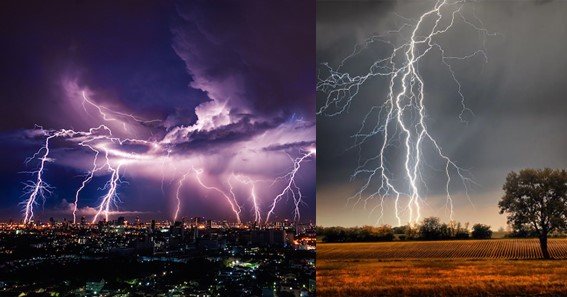Lightning is a spectacular display of nature’s power, created by the intense electrical activity within thunderstorms. But how does this phenomenon produce electricity, and what happens during a lightning strike?
The Formation of Lightning: A Spark of Electricity
1. Charge Separation in Thunderstorms
Lightning originates from the separation of electric charges within a thunderstorm. As the storm develops, air currents cause collisions between ice particles and water droplets, leading to the transfer of electrons. This process results in a buildup of negative charges (electrons) at the bottom of the cloud and positive charges (protons) at the top. The ground beneath the storm becomes positively charged due to the influence of the negatively charged cloud base.
2. The Electric Discharge
When the electric field between the cloud and the ground becomes strong enough, it overcomes the insulating properties of the air. This breakdown in the air’s resistance leads to the formation of a conductive path, allowing electrons to flow from the cloud to the ground. This rapid movement of electrons generates a massive spark of electricity—lightning.

FAQ
- How does lightning produce electricity?
Lightning is produced by the rapid discharge of electrical energy that accumulates in thunderstorms. The separation of positive and negative charges within the cloud and between the cloud and the ground creates a strong electric field, leading to a powerful electric discharge. - What causes the thunder we hear after lightning?
Thunder is caused by the rapid expansion of air heated by the lightning bolt. The sudden increase in temperature creates a shock wave, which we hear as thunder. - Why do some lightning strikes reach the ground?
Lightning reaches the ground when the negatively charged bottom of the cloud connects with positively charged objects on the ground, forming a complete path for the electrical discharge. - Can lightning strike the same place twice?
Yes, lightning can strike the same place multiple times, especially if the location is tall or isolated, like a skyscraper or tree, which can repeatedly attract lightning. - How hot is lightning?
A lightning bolt can reach temperatures of up to 30,000°C (54,000°F), which is hotter than the surface of the sun. This extreme heat is what causes the air around the bolt to expand explosively, producing thunder.










